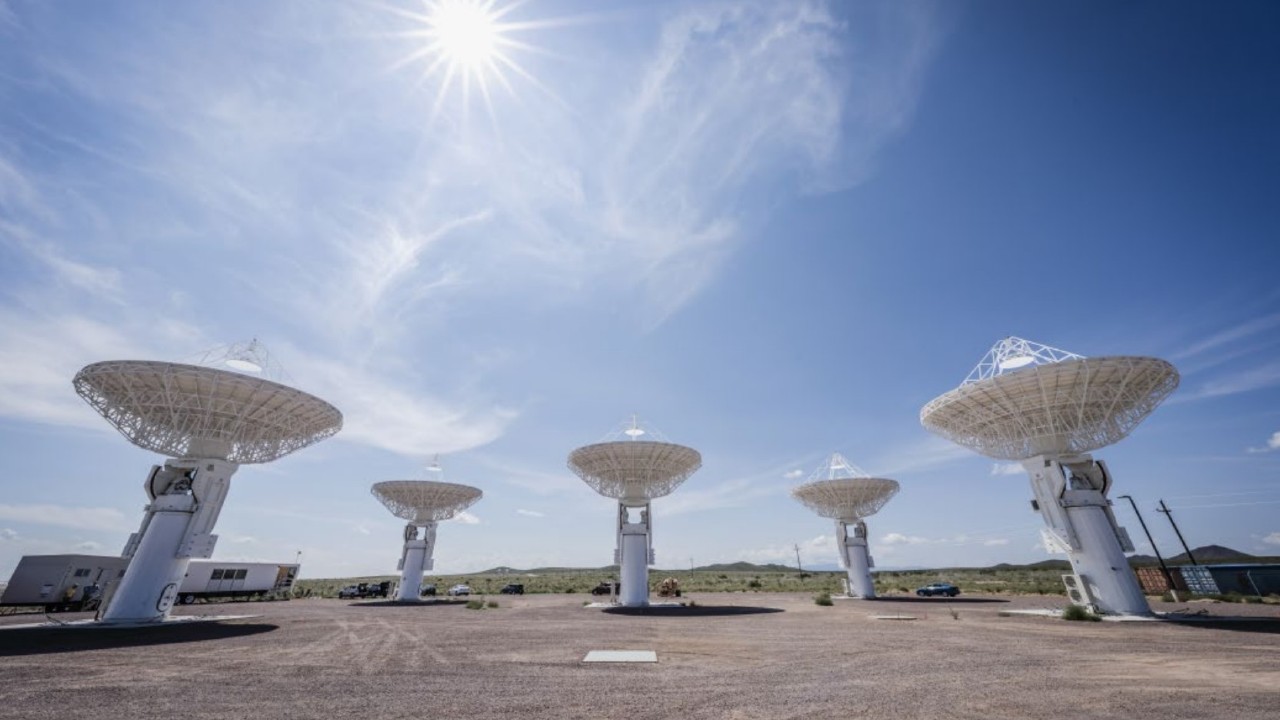
The United States, United Kingdom and Australia have signed an agreement to develop a deep space radar capable of keeping an eye on what's happening in geosynchronous orbit.
Found around 22,236 miles (35,786 kilometers) above Earth, this region is one of the most distant areas in which satellites operate. Interestingly, each spacecraft in geosynchronous orbit always hovers over the same area of Earth by matching the duration of its orbit to the rate at which our planet rotates once relative to stars in the background.
The new system planned to watch over this part of space is known as the "Deep Space Advanced Radar Capability," or DARC. DARC will provide 24-hour, all-weather radar coverage around the globe for the three nations that make up what's known as the AUKUS security partnership. The agreement is "accelerating capabilities that provide trilateral partners with advanced technology to identify emerging threats in space," according to a U.S. Department of Defense (DoD) statement published Dec. 1.
The announcement adds to Space Force's increased focus on what is known as space domain awareness, which boils down to the ability to identify, track and keep watch over the various objects in orbit around Earth. "As the space domain rapidly evolves, we must continue taking deliberate steps to ensure our collective ability to operate safely, and our nations are uniquely positioned to provide that capability on a global scale," said U.S. Chief of Space Operations Gen. Chance Saltzman in a Space Force statement announcing the DARC agreement.
Related: US Space Force wants to track 'abnormal observables' with unknown origins in Earth's orbit
Space Force conducted successful tests of a technology demonstrator for the upcoming DARC system in 2021 at the White Sands Missile Range in New Mexico, according to a Space Force statement. In 2022, Northrop Grumman was awarded a $341 million contract to develop technologies for the program.
The first of three DARC sites is planned for Western Australia and is expected to be online by 2026. All three sites should be online by 2030, according to Space Force's statement. They are expected to cost a total of $1 billion.
"From its Australian site, the DARC will integrate with other DARC sites in the United States and the United Kingdom. This will provide a space domain awareness capability to deter nations from undertaking activities that are against Australia's interests by providing continuous global detection and observation of satellites in space," said Australian Lt. Gen. John Frewen, Chief of Joint Capabilities.
The choice of Australia for the first DARC site comes as military tensions continue to rise in the Indo-Pacific region that covers both the Indian and Pacific oceans; the mechanism in this location will largely be aimed at countering a rising Chinese military presence.
China currently owns and operates roughly half of the world's intelligence, surveillance and reconnaissance (ISR) spy satellites, "most of which could support monitoring, tracking and targeting of U.S. and allied forces worldwide, especially throughout the Indo-Pacific region," according to a 2023 DoD report issued to the U.S. congress.
"Recent improvements to the PRC's space-based ISR capabilities emphasize the development, procurement, and use of increasingly capable satellites with digital camera technology as well as space-based radar for all-weather, 24-hour coverage," the report continues.
According to the Australian Broadcasting Corporation (ABC), China's military has been using hundreds of these satellites to collect intelligence about military training exercises the U.S. has conducted with its partners in the region.
In October 2023, some of these satellites were maneuvered "within hundreds of meters of colliding with an Australian satellite," ABC reported. "We were worried about the potential for creating debris," an Australian military official told ABC. "It was an interesting situation to work out."
Other Chinese satellites high in geosynchronous orbits have been making close approaches to American satellites suspected to be operated by the U.S. Space Force. To keep an eye on these specific types of activities in geosynchronous orbit, Space Force has launched secretive spacecraft design to serve as "watchdogs" over its own satellites and is tapping private companies to help it accelerate technologies to help it respond to emerging threats in space.







